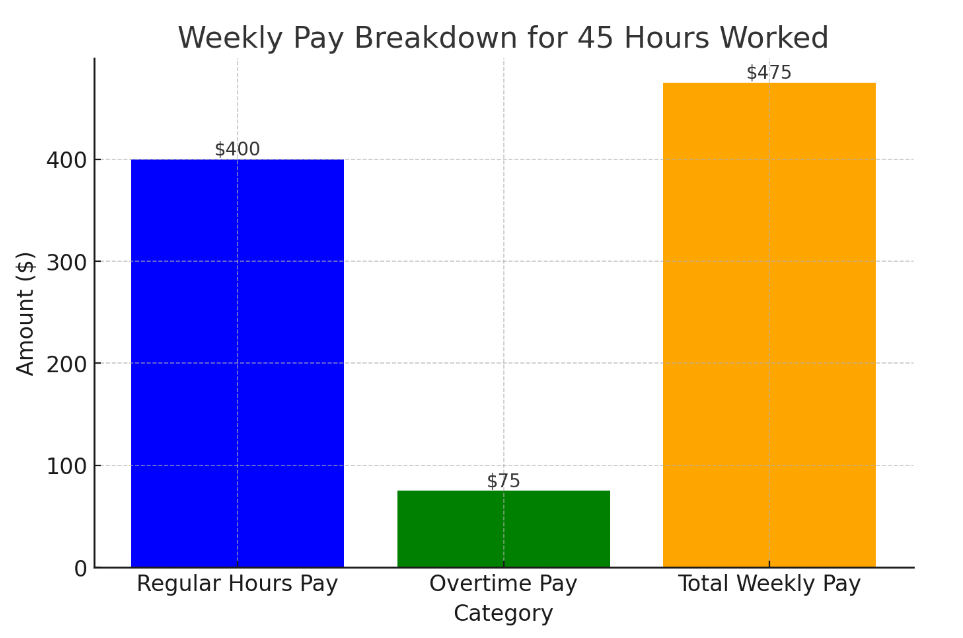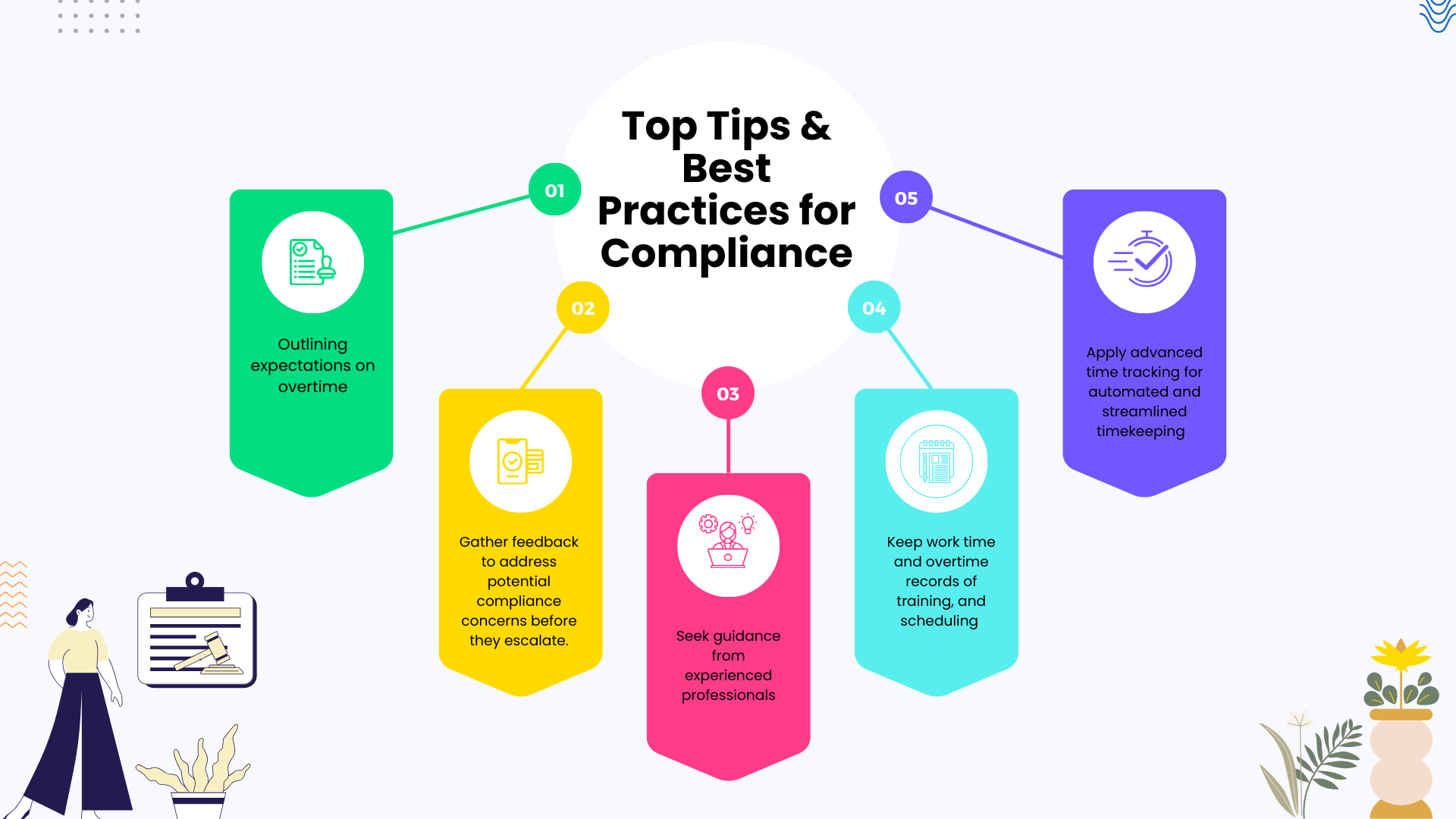How to Stay Compliant Despite These 7 Common Pitfalls in Texas Overtime Pay
Staying compliant with Texas overtime pay regulations can be challenging. Avoid these common pitfalls and ensure your business remains on the right side of the law with this helpful guide.

Understanding how to accurately calculate and disburse overtime in Texas is vital for businesses: non-compliance can carry considerable penalties.
The workweek in Texas consists of 40 hours. Any work beyond these scheduled hours qualifies as overtime payment.
Did You Know?
President Franklin D. Roosevelt enacted the Fair Labor Standards Act (FLSA) in 1938, establishing the entitlement to overtime compensation for individuals working more than 40 hours a week.

Nonetheless, exceptions are present, including numerous nuances of overtime compensation that might be applied.
Below, we discuss how businesses can grasp details and keep up with regulation changes vital to maintaining compliance.
Navigating Overtime Pay in Texas: What Employers Need to Know
According to the Federal Labor Standards Act (FLSA), overtime pay is required after an employee works more than 40 hours in a workweek. The FLSA mandates that employers must pay employees one and a half times their regular rate for hours worked beyond 40 in a workweek.

Texas follows FLSA standards: Overtime rules in Texas generally follow the FLSA guidelines, with no additional state-mandated overtime pay.
Workweek definition: It is any 7 consecutive 24-hour periods, not necessarily Monday-Friday. Employers in Texas can establish the start and end of a workweek based on their operational needs as long as the workweek is fixed and consistently applied. Overtime is calculated based on this total, not per day.
Regular rate nuances: Texas follows a "rolling workweek" method to calculate the regular rate. The regular rate includes base pay, commissions, bonuses, and other compensation, calculated based on the previous pay period. Thus, they consider all your earnings and hours worked from the previous pay period, not just the current week. This evens out fluctuations in pay due to commissions or bonuses and ensures a more accurate overtime rate.
Calculating Overtime: The Fair Labor Standards Act (FLSA) sets the federal floor for overtime pay, requiring employers to pay 1.5x regular rate for hours worked over 40 per workweek.

Recordkeeping: Employers must maintain accurate records of employee hours worked, pay rates, and overtime. Consider using timekeeping software for ease.
Who is Exempt from Overtime Pay in Texas
Overtime Eligibility
In Texas, most wage earners qualify for overtime pay if they work beyond 40 hours per week.
However, specific exemptions exist for some categories, including teachers, outside sales representatives, lawyers, doctors, salaried executives, professionals, and administrators earning over $683 weekly.
These exempt employees generally hold managerial or higher-level positions with specific duties, and overtime rules don't apply to them.
Other exemptions include:
- Executives whose managerial duties and a high salary threshold typically qualify them for overtime exemption
- Highly compensated administrative employees
- Professionals like lawyers, doctors, and engineers often qualify for exemption, but duties and salary levels must meet strict criteria
- Certain agricultural workers may be exempt from overtime under specific FLSA provisions
- Properly classifying workers as independent contractors can avoid overtime obligations, but strict legal tests must be met.
Alternate Calculation Methods: Certain professions, such as police officers, firefighters, healthcare workers in hospitals and nursing homes, and government employees, sometimes have unique methods for calculating overtime pay. This may involve receiving paid time off instead of additional pay.
Accumulating Compensatory Leave: Texas allows employees to accrue overtime credit for compensatory leave, but most non-exempt individuals are capped at 240 hours. This means they can't store more than 240 hours of overtime pay to be used as future time off.
Common Pitfalls in Texas Overtime Pay Compliance
Misclassifying employees as exempt: Some employers incorrectly classify their employees as exempt from overtime pay when, in fact, they should be classified as non-exempt and eligible for overtime pay.
Not paying for all hours worked: Employers must pay employees for all hours worked, including overtime hours. This includes time spent working during meal breaks or after regular working hours.
Not calculating overtime pay correctly: As mentioned above, overtime pay in Texas must be paid at a rate of 1.5 times the employee's regular rate of pay for all hours worked over 40 in a workweek. This includes any bonuses or commissions earned.
Not keeping accurate records: Employers must maintain accurate records of their employees' hours worked and wages paid. This includes records of overtime pay.
Not paying overtime to tipped employees: Tipped employees in Texas are still entitled to overtime pay, and their overtime pay rate should be calculated based on their full minimum wage, not just their tipped minimum wage.
Not paying for training time: Employers must compensate employees for their time while attending training sessions, workshops, or other educational activities directly relevant to their job duties.
Not paying for on-call time: If an employee is required to be on-call and is restricted in their ability to use their time for their own purposes, they may be entitled to be paid for their on-call time.
Top Tips for Texas Employers to Stay Compliant

Communication and Documentation
- Develop clear and concise written policies: Outlining expectations on overtime, breaks, pay periods, and leave ensures clear communication and reduces confusion.
- Hold regular employee meetings: Discuss compliance policies and answer questions to alleviate concerns and foster a culture of open communication.
- Maintain detailed and accurate employee records: Keep records of training, timekeeping, performance evaluations, and disciplinary actions for legal record-keeping and potential investigations.
Proactive Practices
- Invest in training beyond legal requirements: Conduct workshops on employees' rights and respectful workplaces to create a positive and inclusive environment.
- Offer flexible work arrangements: Consider options like telework, compressed workweeks, or flexible start/end times to improve employee satisfaction, boost morale, and potentially reduce legal risks.
- Conduct exit interviews: Gather feedback from departing employees to identify areas for improvement and address potential compliance concerns before they escalate.
More Tactics for Maintaining HR Compliance in a Dynamic Regulatory Environment
🔖Subscribe to compliance updates : Stay informed about changing regulations and legal developments through newsletters or online resources.
🔖Partner with a reputable HR consultant: Seek guidance from experienced professionals for complex situations or ongoing compliance support.
🔖Conduct Regular Audits: Routinely audit your payroll to detect discrepancies early. Check employee classifications, accuracy of records, and proper overtime compensation.
🔖Train Management: Ensure managers and supervisors are well-versed in overtime regulations, including employee classification, tracking hours, and managing overtime effectively. Offer ongoing training and resources like manuals or handbooks to clarify company policies and procedures on overtime.
Utilizing Time Tracking Software as Compliance Practice
Implement user-friendly and reliable time tracking software system for employees to accurately record their hours.
- Accurate Timekeeping: It eliminates manual errors and ensures precise tracking of worked hours, which is crucial for accurate payroll and overtime calculations.
- Improved Efficiency: It streamlines timekeeping processes, saving time and reducing administrative burdens for both employees and HR teams.
- Enhanced Transparency: It provides clear records of individual and team work hours, fostering accountability and trust.
- Flexible Options: Advanced time tracking features mobile app access, project tracking, and automatic overtime alerts for added convenience and improved compliance.
- Data-Driven Insights: It generates reports that allow users to see work patterns, identify areas for improvement, and optimize workforce scheduling.
For instance, TMetric, a comprehensive time tracking tool, offers an exemplary case study for understanding how technology can streamline the calculation of overtime, ensuring accuracy and fairness in compensation.
- TMetric offers a built-in billable hours calculator to determine the amount of overtime worked
- You can set your standard working hours per day or week within the tool
- When you track your time using TMetric, it automatically calculates the total hours worked and compares them to your set standard
- Any hours exceeding the standard are considered overtime
- The billable hours calculator can then be used to calculate the pay for those overtime hours based on your hourly rate or overtime pay rate (if applicable).
Additional features:
- TMetric allows you to set custom overtime rules for different projects, users, or teams.
- You can also integrate TMetric with payroll software to automatically calculate and pay overtime wages.
Benefits of Using Time Tracking for Businesses
- Reduced Payroll Errors: Minimizes costly payroll errors and disputes thanks to accurate timekeeping.
- Simplified Overtime Management: Automates overtime calculations and alerts, saving time and ensuring compliance with regulations.
- Data-driven Informed Decisions: It enables users to decide on staffing, scheduling, and resource allocation with ready-made estimates.
- Lower Legal Risks: Proactive compliance minimizes the risk of costly lawsuits, fines, and penalties.
- Enhanced employer brand: Demonstrating commitment to compliance attracts and retains top talent, boosting your competitive edge.
Benefits of Using Time Tracking for Businesses for Employees
- Simplified Time Recording: Convenient and user-friendly time tracking reduces administrative tasks and saves employees time.
- Transparency and Accuracy: It provides employees with clear records of their worked hours, fostering trust and confidence.
- Improved Work-Life Balance: Enables employees to accurately track their time and manage their work-life balance effectively.
Remember, compliance is not a one-time effort. By adopting these tips and best practices, you can create a culture of compliance that benefits your business and employees in the long run.
Failing to acknowledge the risks associated with overworking can be detrimental: it not only compromises mental and physical health but can also precipitate systemic challenges within workplaces, undermining organizational performance.
Conclusion
Navigating overtime regulations can be a legal minefield, jeopardizing the employer's wallet and employees' trust.
The good news: By staying informed, adopting smart practices, and seeking expert advice, businesses can confidently conquer overtime compliance.
Key Takeaways
- It is crucial to keep up with the latest regulations and understand which employees qualify for overtime pay.
- It is vital to track employee hours accurately, communicate expectations clearly, and offer clear options for reporting overtime.
- In case of uncertainties, it is necessary to seek guidance and consult HR professionals or legal experts to ensure that the business is on the right side of the law.
FAQs on Texas Overtime Pay Law
What are the Exemptions? While some professionals and agricultural workers are exempt from overtime under the Fair Labor Standards Act (FLSA), it's important to carefully review the specific criteria for each exemption to ensure they apply correctly. Misclassifying employees as exempt can be a common compliance issue.
What Do Employers Need to Know about Recordkeeping? Businesses are required to maintain accurate records of employee hours worked, including regular and overtime hours. This is essential for ensuring proper pay and demonstrating compliance during audits.
What is the Spread of Hours? Overtime is calculated based on a workweek, not a workday. So, an employee who works 50 hours in a week but no more than 10 hours in any single day would still be entitled to overtime pay for 10 hours.
How to Calculate Overtime Pay? Overtime pay must be calculated at one and one-half times the employee's regular rate of pay, not just their base hourly wage. This can be more complex for employees with variable pay rates or commissions.
What is the Practice of Offering Compensatory Time? In some cases, employers may offer compensatory time off instead of overtime pay, but strict rules govern this practice, and employee consent is required.
What are the Resources for Further Consultation? The Texas Workforce Commission and the U.S. Department of Labor websites offer valuable resources and guidance on overtime laws and compliance requirements.
